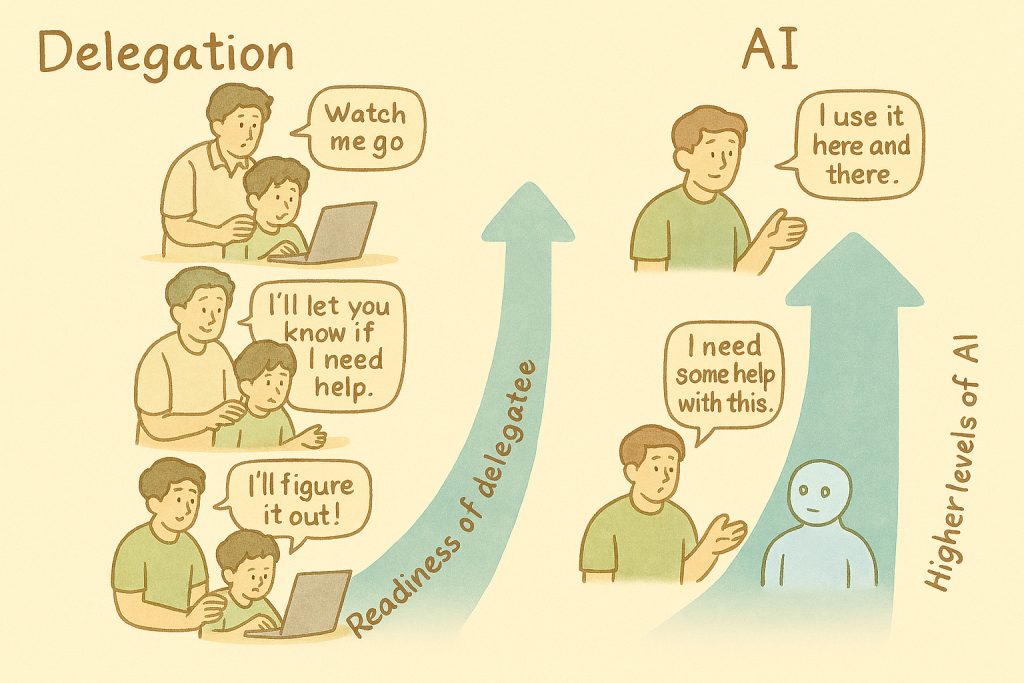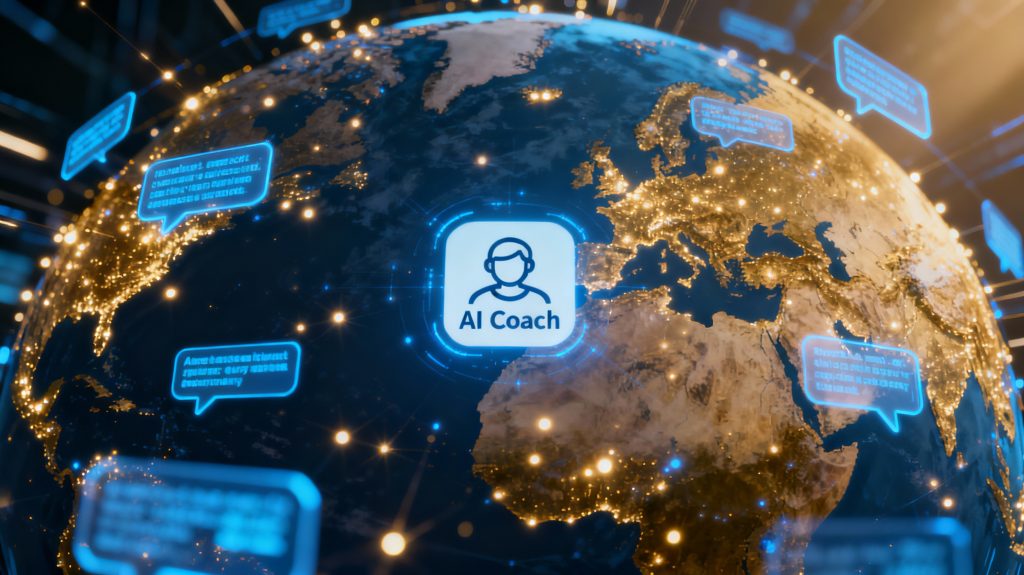Prologue
One evening, just after my evening walk, I got a call from Rajesh, a longtime friend and senior manager in manufacturing. When Rajesh calls me on a weekday, I usually know what it’s about.
Before moving into software, I had worked in manufacturing for almost two decades. Because I understand both shop-floor realities and the software world, friends often call me with questions about applying software to factories.
And my guess was right.
“Ramesh, what is this AI everyone is talking about? Every day I hear about ChatGPT, Gemini, and so on. How can I use AI in my factory?”
I laughed and said, “Yes, those are AI tools — but AI in manufacturing is much more. Let me explain…”
AI: More Than Just ChatGPT
Rajesh’s first question was an obvious one: “AI means ChatGPT, right?”
I smiled and explained:
“Not exactly. Let’s step back.
You’ve worked with CNC machines, which follow fixed instructions: do this, then do that…” They repeat steps exactly, but can’t handle unexpected changes unless rules are written in advance. And this is Automation.
AI is automation and more. It’s trained with large amounts of data — drawings, measurements, or past outcomes. Using mathematical models, it finds patterns in the data. Over time, it builds its own “rules” — not hard-coded by people, but learnt from experience.
It’s like training a new worker. At first, they need step-by-step guidance. With practice, they begin to “just know” what’s right or wrong. Similarly, AI learns from examples, improves over time, and can recognize, predict, or decide in new situations.
So, while automation follows just the instructions, AI learns, adapts, and improves — more like an apprentice who grows into an expert.
“Think of AI like electricity. You see bulbs, fans, and machines powered by it — but electricity itself isn’t any one appliance. ChatGPT is just one ‘appliance,’ a talking AI. In factories, AI takes many other forms. As you know, raw material flows through machines and operations and gets converted as finished part. This flow gets interrupted in myriad and unexpected ways and often much later from the source point. AI can almost eliminate such issues making the flow smooth and predictive”
“No, AI isn’t just a chatbot,” I emphasized again. “It’s like a team of invisible assistants — some guarding quality, some predicting problems, some helping you plan, and some helping design. You’re still in charge, but now with superpowers.”
“Let me give you some examples”
AI in Manufacturing
- Quality Guardian
Infra-red Cameras with AI can monitor the production line and spot tiny defects faster than even skilled inspectors, greatly improving quality. - Maintenance Enabler
Sensors with AI can predict if a pump, motor, or bearing is about to fail days in advance, reducing downtime. - “Supply Chain Master
AI can adjust schedules when a supplier is late or when a rush order comes in. I know today we have advanced ERP/MRP systems to help with this. But the difference with AI is the speed in which we can see the impact and the several alternate paths to reach the best possible solution, thus scoring an edge over today’s automated Industry 4.0 systems. - Intelligent Design Assistant
AI can simulate new product designs, test them virtually, and suggest improvements to speed up innovation.”
Rajesh laughed. “Yes, yes! That makes sense. Tell me more.”
“Sure”
Real-life Examples
“1. Catching Tiny Defects (Quality AI)
Imagine an infra-red camera above your line that never blinks. It captures every product and compares it with its memory of “good” and “bad” items. Even a hairline crack or tiny color mismatch gets flagged.
BMW uses this in their iFACTORY: AI-based image inspection spots the smallest defects in body panels and paint. In some plants, AI even “listens” to machines, flagging a motor that sounds slightly off before it breaks.”
Rajesh nodded: “That would solve major headaches on my line.”
“2. Total Productive Maintenance (Predictive AI)
Every pump, motor, or bearing has a unique vibration or heat pattern when healthy. AI listens to this “heartbeat.” If it notices changes similar to patterns seen in past failures, it warns you in advance.
Godrej’s Factory 360 does this — connecting sensors, ERP, and shop-floor systems for predictive maintenance. At Ambattur, automated welding plus predictive analytics tripled throughput while cutting downtime.”
Rajesh smiled: “So my maintenance team won’t always be firefighting.”
“3. Optimizing Production Schedules (Optimization AI)
When suppliers are late or customers call with rush orders, rescheduling usually takes hours. Optimization AI instantly simulates hundreds of options and gives the best trade-offs: on-time delivery, lowest overtime, least energy use.
Hyundai’s Metaplant America in Georgia uses this with a digital twin of the entire plant. AI constantly rebalances schedules, material flows, and energy use in real time.”
Rajesh chuckled: “I wish my factory were already there.”
“4. Designing Smarter Products (Generative AI)
Traditionally, designing a lighter, stronger car body meant many iterations of sketching and testing.
Generative AI reverses this. You feed requirements — weight, cost, materials for a particular component that you want to design— and it generates and tests hundreds of options. Engineers then choose from the best results.
Godrej has used this in appliances, while BMW applies it to lightweight parts for electric vehicles.”
Rajesh jumped to conclude: “So AI is like assistants — one for quality, one for machines, one for planning, and one for design. And I still decide.”
“Exactly,” I said. “That’s Industry 5.0 — humans and AI as partners. Industry 4.0 gave us connected machines and dashboards. Industry 5.0 is about humans and AI working together. AI brings foresight, speed, and accuracy. Humans bring judgment, creativity, and relationships. The best managers will lead this partnership!
Rajesh said: “So AI is not just some fancy chatbot. It’s a set of tools to run my plant better — if I bring my people along.”
“Oh, yes”
Rajesh was very happy and thanked me profusely. He asked me to propose the next steps so that he could start implementing right away!
“The starting point, as you would have already guessed is to ensure good data at all process steps like the Bill of Materials, Material Planning, Purchase, Inventory, the production, sales and the Customer. Next, choose a process step where you can quickly implement and get results, so that you can scale it up from there. Needless to say, trust being the foundation for implementing change, involve all the stakeholders and communicate transparently. Upskill across all levels, on AI. AI being an area that is fast evolving, there needs to be dedicated members who watch the developments closely and assess the impact on the whole ecosystem. All the best, Rajesh!”
Acknowledgement – Thanks to Srini, my colleague for providing valuable inputs




